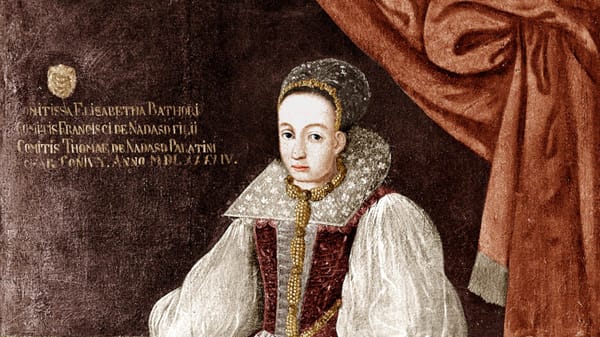Unveiling the Báthory Dynasty: Genetic Confirmation of Historical Lineage Through Ancient DNA Analysis






The iScience article presents an enthralling investigation into the genetic lineage of the Báthory family, one of medieval Hungary's most influential noble dynasties. Famed for their extensive roles during the tumultuous Ottoman occupation, the Báthorys wielded significant influence as they balanced power between the Turkish protectorate and the fragmented regions of Hungary. Beyond their political significance, the family's name has become synonymous with both power and infamy through the centuries.
The Báthory family, whose influence stretched across lands that are today part of Hungary, Poland, Slovakia, and Romania, was one of the preeminent noble houses of the medieval Hungarian Kingdom. They traced their descent to the Gutkeled clan, specifically to Swabian brothers who immigrated to Hungary during the 11th century reign of King Peter.
The family rose to significant prominence through two main branches:
Their coat of arms—featuring three wolf's teeth below a crown encircled by a dragon biting its tail—symbolized their fierce reputation and nobility.
Archaeological excavations at Pericei (now in Romania) uncovered the Báthorys' family chapel, offering a fascinating window into their world. Among the ruins, two Báthory family members were identified from 13 skeletons, courtesy of artifacts and genealogical evidence. The site revealed a treasure trove of grave goods:
Each artifact bears testimony to the high status of the deceased. Renaissance-era tomb slabs illustrating knights in armor, now preserved in the Reformed Church in Pericei, further cement the site's historical significance.
The genetic testing brought another layer of history to light through several significant findings:
Using Next Generation Sequencing (NGS), researchers achieved impressive genome coverages, allowing them to unveil these genetic tapestries with unprecedented clarity.
Two individuals—identified as Elek and Ferencz Báthory from historical accounts—were confirmed as fourth-degree relatives through genetic analysis, corroborating both genetic and historical data. Their close kinship, revealed through DNA analysis, perfectly matches the recorded Báthory lineage.
The personal stories of these nobles emerged from both their genetics and grave goods, painting a picture of high-ranking warriors laid to rest with appropriate ceremony and pageantry.
While the genetic study focuses on male Báthory lineage, the family's most infamous member casts a long shadow over their legacy. Elizabeth Báthory (1560-1614), born to Baron George VI Báthory and Anna Báthory, married Count Ferenc Nádasdy and inherited vast wealth and properties after his death in 1604.
In 1610, Elizabeth was accused of torturing and murdering hundreds of young women—allegedly bathing in their blood to preserve her youth. After the testimony of over 300 witnesses and the confession of her servants (obtained under torture), she was confined without trial to Castle Čachtice by Count György Thurzó, where she remained until her death.
Her case remains controversial among historians. Some believe she was the victim of a political conspiracy aimed at seizing her extensive lands and wealth, while others point to substantial evidence of her sadistic crimes. Her legacy inspired numerous legends and earned her the nicknames "Blood Countess" and "Countess Dracula," with some suggesting she influenced Bram Stoker's famous novel.
Through principal component analysis (PCA) and genetic drift evaluations, the study revealed that the Báthory family shared significant genetic threads with Northern Europeans and Medieval Hungarians. This genetic journey doesn't merely confirm an ancestral portrait; it vividly paints nuances of ancestral connections across European landscapes, enhancing our understanding of medieval demographics.
The genetic landscape is further nuanced by traces of other migrant groups like the Huns, Avars, and medieval Hungarians. These findings highlight a common story in the Carpathian Basin, where waves of migration melded diverse peoples, creating a complex genetic mosaic.
The rediscovery and genetic identification of the Báthory family members exemplify the power of interdisciplinary research to illuminate history. This work sparks renewed interest in noble lineages, offering a vibrant canvas on which we can paint the narratives of the past, understanding the mixture of peoples and cultures that molded Europe's noble tapestry.
The Báthory genetic narrative includes not only their Germanic origins and Hungarian influences but also the dark legacy of Elizabeth that continues to fascinate and horrify in equal measure. Their story, now illuminated through modern science, reveals how DNA can unveil both the grandeur and shadows of history's most powerful families.
Through the combined lenses of archaeology, genetics, and historical records, the Báthory family emerges as a powerful symbol of medieval European nobility—with all its splendor, complexity, and occasional darkness.
Comments